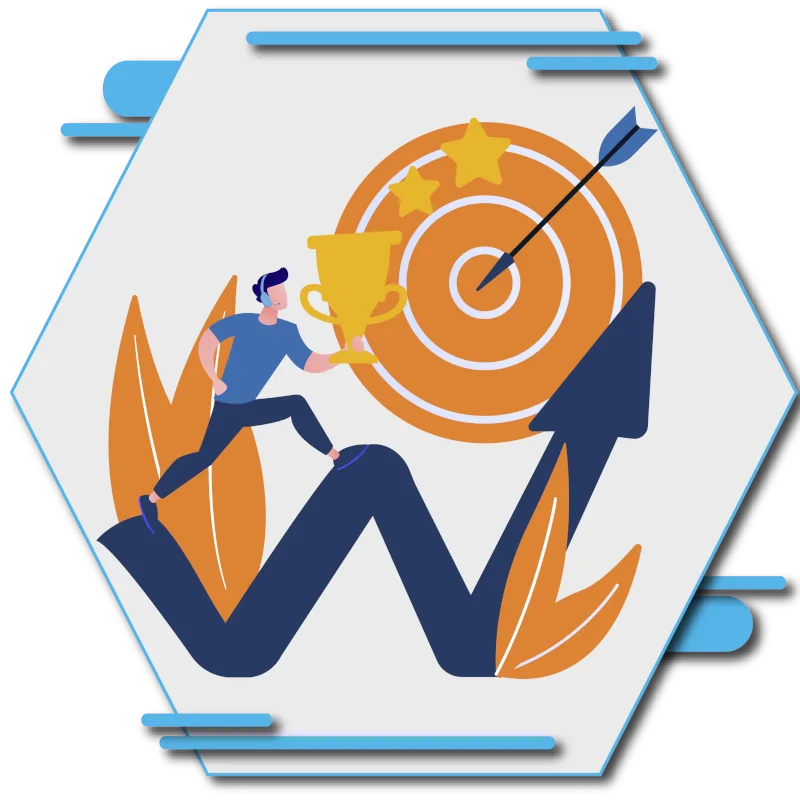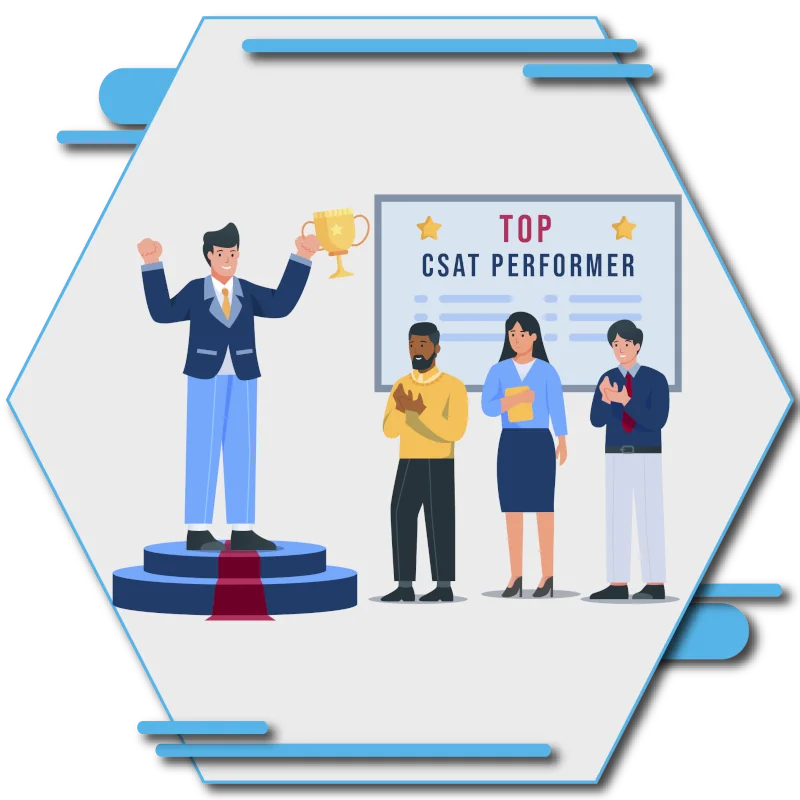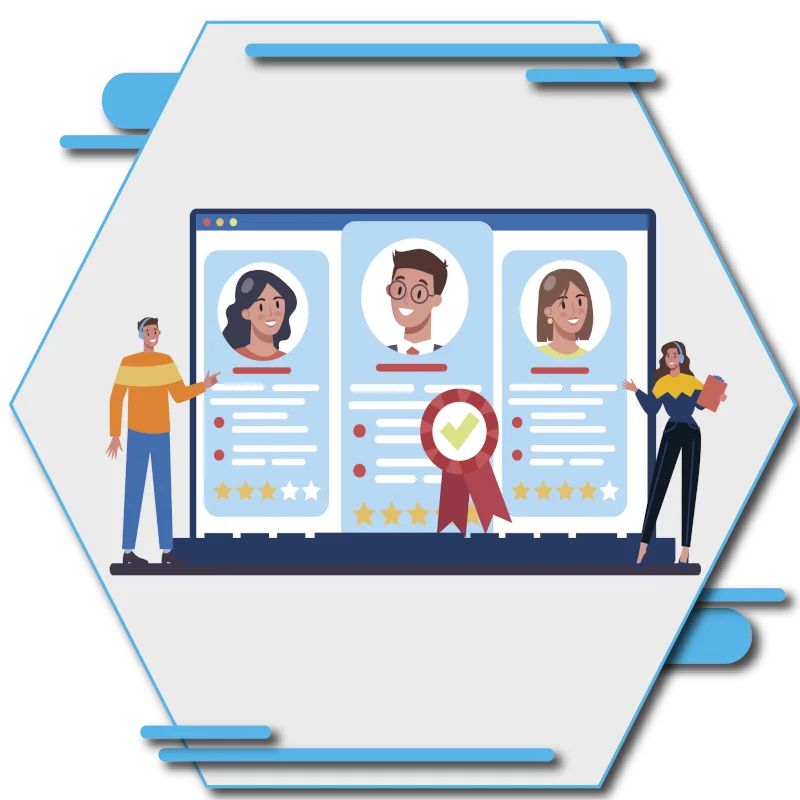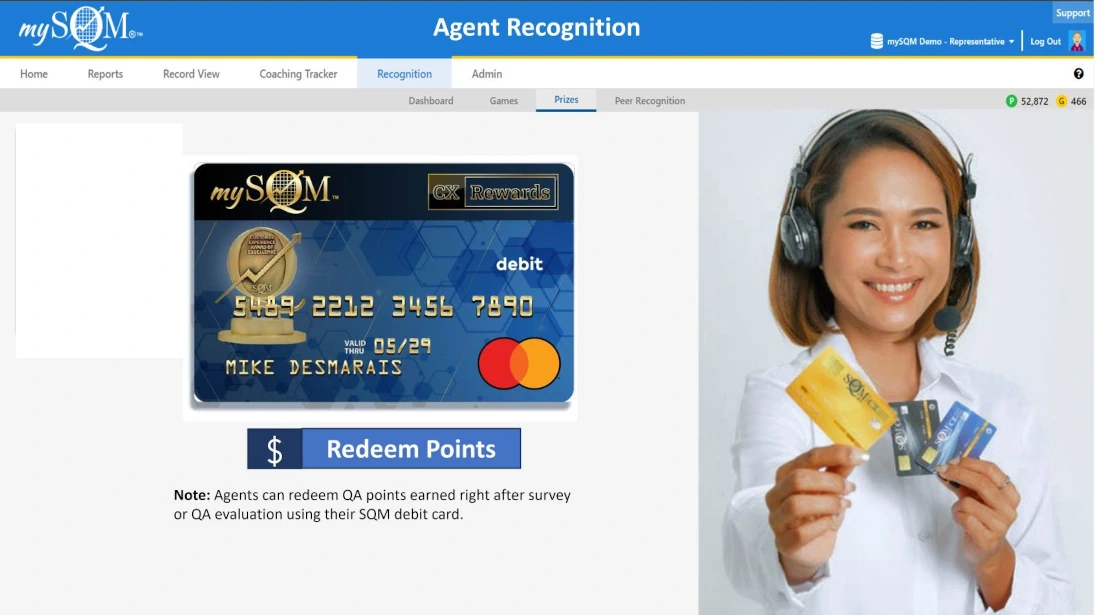Agent engagement has become one of the biggest challenges in today’s call centers. With rising workloads, customer complexity, and performance pressure, keeping agents motivated and emotionally connected to their work can be tough. That’s where gamification comes in. By turning everyday tasks into meaningful challenges and celebrating progress in real time, gamification helps agents feel recognized, rewarded, and inspired to perform at their best.
At SQM Group, we know that engagement isn’t just about satisfaction, it’s about empowerment. When agents are motivated through positive competition, visible achievements, and personal growth, they bring more energy and empathy to every customer interaction. In this blog, we’ll explore how gamification transforms engagement from a buzzword into a practical, measurable strategy for building stronger, happier, and higher-performing teams.
What Is Gamification in a Contact Center?
Gamification is the process of applying game-like elements—such as points, badges, leaderboards, and rewards—to everyday work tasks. In a call center, that means transforming routine performance goals into interactive, motivating experiences. Instead of simply tracking metrics like First Call Resolution (FCR) or customer satisfaction, agents can see their progress in real time, compare results with peers, and celebrate achievements through friendly competition.
The key is that gamification makes work more engaging and rewarding without feeling forced. It taps into agents’ natural drive for accomplishment and recognition. Whether it’s earning a badge for resolving a difficult call, climbing a leaderboard for quality scores, or unlocking new levels of achievement, these moments turn daily routines into opportunities for success and personal growth.
Gamification also provides leaders with a powerful engagement tool. When designed thoughtfully, it creates a shared sense of purpose across teams—connecting performance with collaboration, learning, and recognition. The result isn’t just improved productivity; it’s a stronger, more connected workplace culture where agents feel valued and inspired to grow.

Why Does Agent Engagement Matter More Now Than Ever?
Behind every positive customer experience is an engaged agent. Yet, many contact centers struggle to maintain motivation in an environment driven by metrics, pressure, and repetition. Disengaged agents are more likely to deliver poor service, experience burnout, and leave the organization altogether. In contrast, engaged agents feel connected to their purpose, take pride in their performance, and form stronger relationships with customers.
Engagement directly impacts measurable outcomes like First Call Resolution (FCR), Customer Satisfaction (CSAT), and turnover rates. When agents feel appreciated and invested in their success, they’re more focused, empathetic, and consistent. Customers notice the difference—and so do managers, who see fewer errors, higher productivity, and improved morale across the floor.
That’s why call centers can’t afford to treat engagement as a one-time initiative. It must be a continuous effort supported by feedback, recognition, and growth opportunities. Gamification brings these pieces together by turning progress into something visible and rewarding, making engagement both measurable and meaningful.
How Gamification Drives Agent Engagement
At its core, gamification works because it taps into basic human motivation. People naturally want to achieve goals, earn recognition, and see the results of their efforts. In a call center, where the day-to-day can feel repetitive, gamification gives agents something to strive toward and celebrate along the way.
Every point earned, level unlocked, or badge awarded reinforces progress and purpose. These small wins create a feedback loop that keeps agents motivated and emotionally invested in their work. Instead of seeing metrics as management tools, agents view them as personal milestones, something they own and take pride in achieving.
Gamification also strengthens team culture. Leaderboards and collaborative challenges foster healthy competition, where agents cheer each other on instead of working in isolation. Managers gain better visibility into performance trends, making it easier to coach, recognize, and support agents in real time. When done right, gamification creates a win-win environment—agents feel valued and motivated, and customers receive more consistent, high-quality support.
What Makes an Effective Gamification Program for Agents?
A successful gamification strategy goes beyond flashy visuals or quick rewards. It’s about designing an experience that keeps agents motivated, supported, and connected to their goals. The best programs blend competition, collaboration, and continuous feedback to strengthen engagement.
Here are the core elements that make gamification work:

Clear Goals and Metrics
Agents need to know what success looks like. Whether it’s improving FCR, increasing QA scores, or boosting customer satisfaction, clear and attainable goals help agents stay focused and feel a sense of accomplishment.

Points and Badges
These provide instant recognition for achievements—big or small. Points track progress, while badges symbolize milestones, such as “Top CSAT Performer” or “100 Customer Calls Successfully Resolved.” Visible rewards motivate agents to keep improving.

Leaderboards and Healthy Competition
Public recognition fuels engagement. Leaderboards encourage friendly competition while helping managers spot high performers and those needing extra support. Transparency creates motivation and accountability.

Real-Time Feedback
Immediate feedback keeps agents informed and inspired. Instead of waiting for end-of-month reviews, real-time dashboards or notifications show how an agent is performing right now—making improvement feel immediate and achievable.

Personalization
Not every agent is motivated by the same rewards. Customizing challenges and recognition—based on preferences, skill levels, or career goals—helps ensure the system is inclusive and meaningful for everyone.

Collaboration and Team Challenges
Gamification doesn’t have to be all about competition. Team goals and collective challenges help agents support one another, celebrate wins together, and strengthen workplace relationships.
When these elements work together, gamification becomes more than a motivational tool—it becomes part of your contact center culture. Agents stop chasing metrics for management and start achieving goals for themselves and their team.
Best Practices and Common Mistakes
Like any engagement initiative, gamification succeeds when it’s thoughtfully planned and supported—not just added on as an afterthought. When done right, it motivates agents, strengthens culture, and improves performance. When done wrong, it can feel forced or even discourage participation.
Best Practices

Start Simple and Scale Gradually
Begin with one or two key metrics, such as QA or FCR performance. Once agents are comfortable and engaged, expand to include new goals and rewards.

Recognize Effort, Not Just Results
Rewarding progress keeps motivation high, even for agents still improving. Celebrate consistency, growth, and collaboration—not only top performance.

Integrate Recognition Across Systems
Use gamification tools that sync with existing QA, CRM, or coaching platforms so achievements are tracked automatically. This saves time and ensures fairness.

Encourage Manager Participation
Leaders play a crucial role in keeping energy high. When managers celebrate achievements and model enthusiasm, agents stay engaged longer.

Gather Feedback and Evolve
Gamification should never be static. Regularly ask agents for input to improve challenges, rewards, and fairness. The goal is to make it motivating for them.
Common Mistakes to Avoid

Overemphasizing Competition
Healthy rivalry can motivate, but too much focus on “winning” may discourage teamwork. Balance individual and team goals to keep the environment positive.

One-Size-Fits-All Rewards
Not every agent values the same recognition. Mix rewards—like shoutouts, digital badges, or small perks—to appeal to different personalities.

Neglecting the Data Behind the Game
Gamification works best when it’s tied to real insights. Without linking results to engagement or customer outcomes, it risks becoming a temporary morale booster rather than a lasting strategy.
When designed with fairness, flexibility, and feedback in mind, gamification becomes a lasting driver of engagement—not just a temporary motivator.
Bringing Gamification to Life at SQM
At SQM Group, we’ve seen how the right mix of recognition, competition, and real-time feedback transforms agent engagement. When employees clearly see the connection between their efforts and customer outcomes, work becomes more meaningful—and motivation rises naturally.
Through mySQM™ software, call centers can gamify performance using real-time customer feedback, QA evaluations, and CX metrics. Agents receive immediate recognition for achievements such as improving First Call Resolution (FCR) or maintaining high Customer Satisfaction (CSAT) scores. This instant visibility turns quality assurance into a source of pride rather than pressure.
Recognition is also central to gamification. SQM’s rewards and recognition programs allow teams to celebrate milestones, highlight top performers, and reinforce positive behaviors across all levels of the organization. Whether it’s earning a digital badge for exceptional service or seeing one’s name on a team leaderboard, agents feel appreciated and connected to shared success.
By combining technology, recognition, and data-driven insights, SQM helps organizations build a culture where engagement thrives—and where agents are empowered to deliver outstanding customer experiences every day.

Turning Engagement into a Daily Win
Gamification has reshaped how call centers think about engagement. It takes what used to feel routine and turns it into something agents want to participate in every day. By celebrating progress, recognizing achievements, and creating friendly challenges, call centers can transform the workplace into a space where motivation and morale thrive.
At SQM Group, we believe engagement shouldn’t depend on reminders or incentives—it should grow from connection and purpose. When agents feel valued, supported, and inspired to improve, performance follows naturally. Gamification isn’t just a tool for fun—it’s a strategy for building stronger teams and delivering better customer experience, one game at a time.
